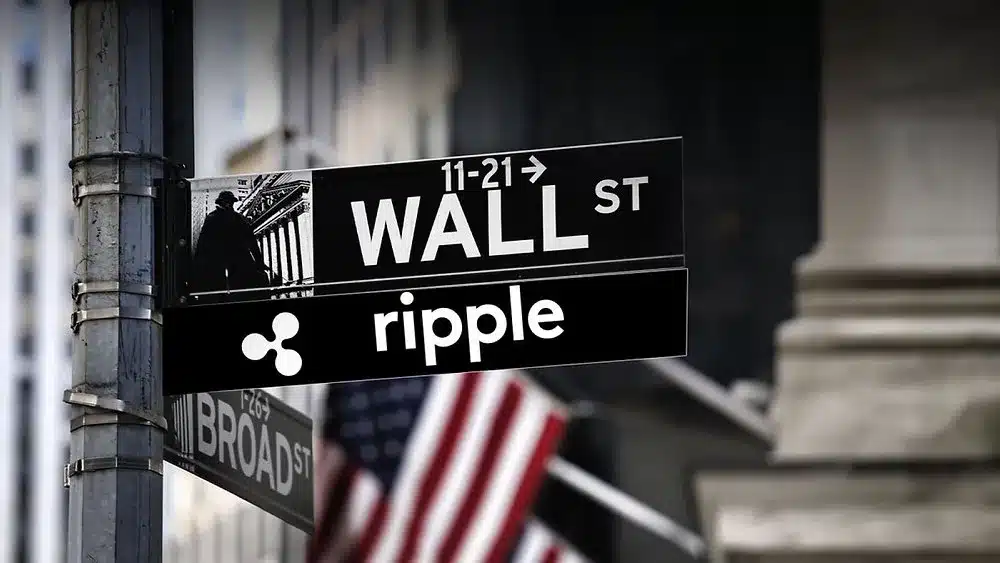Pundit Claims Wall Street is ‘Terrified’ of XRP – Here’s Why
0
0

- Ripple pushes for a U.S. banking charter, raising institutional eyebrows.
- XRP emerges as a core settlement layer in a new financial infrastructure.
- Analysts say Wall Street is losing control over cross-border liquidity systems.
Wall Street may be on edge as XRP, the digital asset tied to Ripple, steadily advances toward becoming a pillar of financial infrastructure.
According to crypto analyst and commentator Pumpius, XRP’s potential to reshape global liquidity is raising concerns among institutional players who have traditionally controlled cross-border finance.
XRP was not created to target retail investors but was developed as a programmable liquidity tool for financial institutions. Designed with speed and scalability in mind, the Ripple Technology Network has the potential to reshape the existing clearing systems as the XRP Ledger enables instant, trustless, and cross-border transactions.
Also Read: 50,000,000 XRP Stuns Community – What is Happening?
Ripple, the company behind XRP, is taking steps towards becoming a legal part of the American banking system. 36crypto previously reported that Ripple has requested a national banking charter, which would offer it access to Federal Reserve master accounts and Tier 1 capacity.
This would enable Ripple to circumvent conventional bottlenecks in the banking system and liquidity path.
The firm has also introduced RLUSD, a stablecoin supported by the U.S. dollar reserves held at the Federal Reserve. Assuming adoption, it would be a compliant substitute for current settlement systems, resulting in quicker and more efficient channels of transmitting digital money.
WHY WALL STREET IS TERRIFIED OF XRP
They laughed at it.
Now they’re whispering behind closed doors —
Because $XRP is becoming the nuclear protocol of a new banking system.
Let’s decode this:pic.twitter.com/YIfPCssBxE
— Pumpius (@pumpius) July 6, 2025
XRP Positioned as Core Settlement Layer in New Financial Rails
Circle, the issuer of USDC, is also seeking a banking charter, which Pumpius describes as a coordinated move, not a rivalry, toward establishing a new system of financial rails.
These emerging infrastructures are aligned with ISO 20022 standards, making them suitable replacements for the aging SWIFT network.
Legacy banking models are regarded as one of the victims of tokenized money. Digital ledgers such as the XRPL enable institutions to exchange funds without remittance intermediaries and with minimal commissions and friction across borders with near-instant settlements.
The fact that XRP will play the role of the core settlement layer makes it even more strategic.
Wall Street’s Control Faces Unprecedented Pressure
According to Pumpius, what’s unfolding is not just Ripple’s corporate expansion but a structural change in how money moves. Wall Street’s fear stems from the realization that this new infrastructure operates beyond their traditional influence.
Ripple’s progress, combined with regulatory readiness, suggests a shift in control that legacy players did not anticipate.
Ripple (XRP) may become a regulated instrument systematically applied to global settlements, which has the potential to disintermediate much of Wall Street.
With these historic chokepoints slowly dissipating, Wall Street institutions that have controlled cross-border finance are observing a new architecture being built that does not initially include them.
XRP’s growing role in the evolving financial system is challenging long-standing structures. With Ripple seeking regulatory status as a bank and expanding into stablecoin issuance, Wall Street’s concern reportedly appears tied to the asset’s increasing independence and utility.
Also Read: Expert Analyzes XRP Path to $23, Says it is Ready
The post Pundit Claims Wall Street is ‘Terrified’ of XRP – Here’s Why appeared first on 36Crypto.
0
0
 Manage all your crypto, NFT and DeFi from one place
Manage all your crypto, NFT and DeFi from one placeSecurely connect the portfolio you’re using to start.









